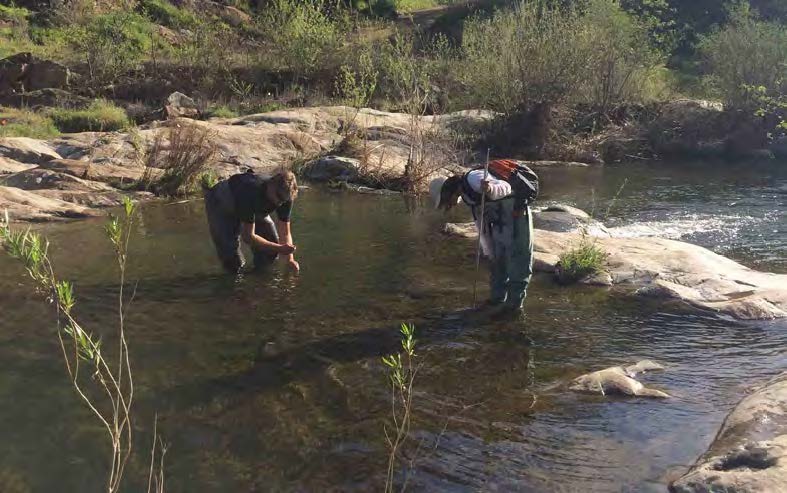Stream food webs to be examined in study to better integrate stream assessment tools

SCCWRP and its partners have launched a three-year effort to better integrate stream condition assessment tools in California by examining how ecological stress alters the complexity and interconnectedness of stream food webs.
The study, which began field sampling in April, will use advanced computational approaches to analyze the food-web relationships between bacteria, algae and bottom-dwelling invertebrates.
Researchers’ goal is to understand how these three pillars of stream food webs are being altered as streams experience increasing ecological degradation. Such insights will help researchers build a more holistic, integrated understanding of stream ecosystem functioning.
Researchers are particularly interested in using bacteria to discern subtle changes in stream health. Especially in urbanized settings, existing bioassessment tools often are unable to distinguish subtle gradients in stream condition.
SCCWRP and its partners have worked for the past two decades to adapt benthic invertebrates and algae as biological indicators of stream condition, but have done comparatively little work on bacteria because these microbial communities cannot be readily observed and classified via traditional taxonomic means.
However, during development of the soon-to-be-finalized Algal Stream Condition Index quantitative scoring tool, SCCWRP and its partners showed that stream algae could be reliably identified via DNA sequencing. Like bacteria, stream algae have traditionally been difficult to identify visually.
Researchers will apply the same DNA-based identification approach used with algae to identify stream bacteria. Stream bacteria already are captured as part of routine algae sampling programs, including by the Southern California Stormwater Monitoring Coalition, but the bacteria samples traditionally weren’t analyzed to understand community composition and structure.
Stream bacterial communities have the potential to provide a key additional line of evidence that could improve watershed managers’ confidence in routine stream condition assessments.
Bacteria, along with algae, form the base of stream food webs and play an essential role in mediating biogeochemical cycling processes; indeed, bacterial communities drive ecosystem function more than invertebrate and algal communities.
During the study, researchers will seek to quantify the food web structure of streams and determine how it changes in response to environmental stress.
Researchers already have applied a computationally advanced “network analysis” approach to existing stream algae and invertebrate data to show that the complexity and interconnectedness of the food web decreases as a function of stress. Researchers will seek to incorporate the structure and composition of bacterial communities into this network analysis.
Researchers are interested in examining how changes in the bacterial community correspond to other environmental changes, such as the introduction of an excess nutrient supply. This could allow stream bacteria to serve as a diagnostic tool for tracking specific environmental changes.
An advisory workgroup has been formed that includes participation by local, state and federal wetland managers, water-quality regulators, and academic researchers.
Preliminary results are expected as early as this year; the final report is scheduled to be published in 2020.
For more information, contact Dr. Joshua Steele.
More news related to: Bioassessment, DNA Barcoding, Indices of Biotic Integrity, Top News